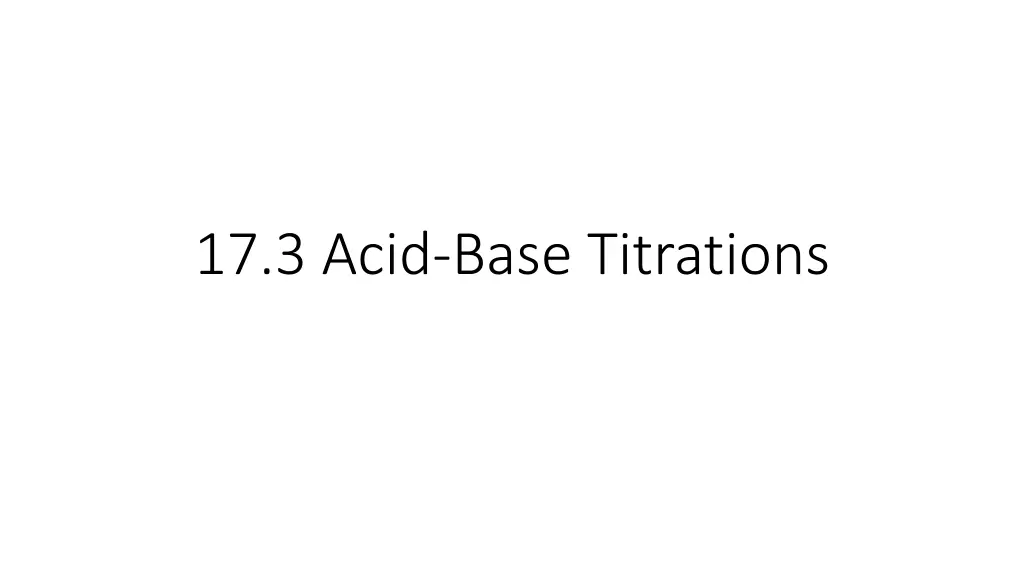
Acid-Base Titrations and Titration Curves Explained
Learn about acid-base titrations, titration curves, and how they are conducted to determine unknown solution concentrations. Explore the role of indicators and pH meters in the process. Understand the importance of equivalence points and how they are determined through titration curves for accurate results.
Download Presentation

Please find below an Image/Link to download the presentation.
The content on the website is provided AS IS for your information and personal use only. It may not be sold, licensed, or shared on other websites without obtaining consent from the author. If you encounter any issues during the download, it is possible that the publisher has removed the file from their server.
You are allowed to download the files provided on this website for personal or commercial use, subject to the condition that they are used lawfully. All files are the property of their respective owners.
The content on the website is provided AS IS for your information and personal use only. It may not be sold, licensed, or shared on other websites without obtaining consent from the author.
E N D
Presentation Transcript
17.3 Acid Base Titrations Titrations Very common analytical test to determine concentrations of unknown solutions Typically done by adding a known concentration (standardized) of base to acid Can be done with indicator or pH meter set up to read pH or volts
17.3 Titration Curves Titration curves are more accurate way to conduct titrations because the exact equivalence point can be determined by extrapolating the graph Equivalence point the point in titration where acid and base are neutralized and equal
17.3 Strong Acid Base Titration Practice: Calculate the pH when the following quantities of 0.100 M NaOH solution have been added to 50.0 mL of 0.100 M HCl A. 49.0 mL B. 51.0 mL
17.3 Strong-Acid Base Practice: A titration of 25.0 mL of HCl with 0.00105 M NaOH standardized. The first sign of color change (equivalence point) occurs after the addition of 15.5 mL of NaOH. What is the concentration of the HCl?
17.3 Weak Acid Base Titrations Weak acid base titration curves look very similar Things that are different They start higher on the scale than strong acid-base titrations The rapid rise at the equivalence point is not as drastic as strong acid-base Equivalence point is not at 7!
17.3 Weak Acid Base Titrations Let s take a look at an example . Titration of 50.0 mL of 0.100 M acetic acid with 0.100 NaOH Let s break this up into 4 portions 1.) Initial pH below 7, can be determined using techniques from chapter 16 (2.89) 2.) Between initial pH and the equivalence point slow rise as H+ ions are neutralized 3.) The equivalence point a rapid rise in pH, but not as drastic as SA and SB 4.) After the equivalence point greater than 7 (C2H2O2- is a weak base)
17.3 Weak Acid Base Titrations Practice: Calculate pH of the solution formed when 45.0 mL of 0.100 M NaOH is added to 50.0 mL of 0.100 M HC2H3O2
17.3 Polyprotic Acids Polyprotic weak acids such as H3PO3, when titrated, occur in a series of steps For these types of titrations, 2 sets of properly chosen indicators would be necessary For indicators, they need to be chosen to respond to changes near the equivalence point, they don t have to be exact
